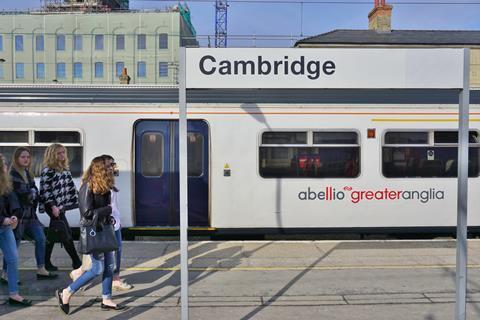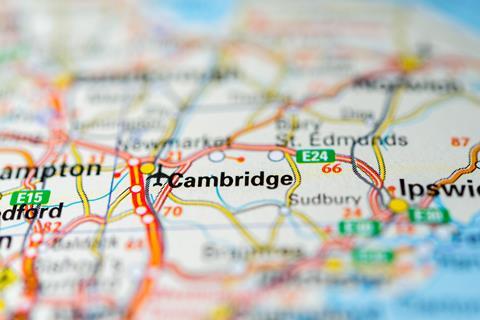What would a development corporation ‘mission’ look like for Cambridge and what public good could it achieve, asks Tom Holbrook

Whoever wins the General Election this year, it is clear that my city, Cambridge, is going to experience significant change. This government – and its possible Labour successor – are focused on a ‘big project’ for the city. What is less evident are the objectives of such a project and how one might measure its success.
In his speech in December at the RIBA, Michael Gove, Secretary of State for Levelling Up, Housing and Communities, announced the establishment of a Development Corporation to oversee the expansion of the Cambridge region. I cautiously welcome this: but to be successful, it must be established around a clear public purpose.
Having worked with several Development Corporations, I know they can be effective instruments, but they need to be constituted around what the economist Mariana Mazzucato would term a ‘mission’. As a policy instrument that will absorb hundreds of millions of public funds, there has to be the creation of ‘public good’ that will not be realised without intervention.
For example, the various iterations of the Development Corporation in the lower Lea Valley delivered the Olympic Games for 2012, but, critically, it also continues to act to secure the legacy of that public investment in one of the poorest areas of London, aiming to achieve economic and social ‘convergence’ in the five host boroughs.
Virtually all the recent conversation about growth around Cambridge has been expressed in terms of the delivery of housing numbers, “…to liberate its potential with tens of thousands of new homes”, yet that is not, in itself, a ‘public good’. Furthermore, it is not as if there has been market failure to build housing, as evidenced by the expansion around the city’s periphery.

As the most unequal city in the UK, Cambridge certainly has a housing affordability crisis. The City Council has gone out of its way to build as much council housing as it has been able, overcoming some significant barriers to it doing so. However, in the same speech, Gove criticised the Mayor of London over the London Plan demand for 30% of delivered housing to be affordable: so getting on and building the excellent social housing the city lacks does not appear to be the Minister’s aim.
At the heart of the affordability dilemma is the hair-raising statistic that in 1983 one could have bought an average house in Cambridge for three times the average salary; 40 years on, the ratio is 14 times the average city salary. Perpetuating the housing approaches of the last 40 years will not address this ratio, but other things – such as establishing good public transport infrastructure – might.
There may not be as much housing around Cambridge as the government would like, but what there is matches the preferred market absorption rates of housebuilders. The renewed focus on housing delivery in recent years has not made housing in the region any more affordable, whatever the supply and demand proponents claim. While a Development Corporation could ensure the right sort of housing is built in the right places, avoiding monocultures and making the best use of the scarcest resource – land – it is unlikely to be able to accelerate the supply rate without changes to the reliance on the housebuilders for delivery.
This ‘public squalor’, experienced in the city’s congestion, broken streets and run down public services needs to be addressed as a priority
Most importantly, the economic success of Cambridge – one of the few cities bucking the UK’s productivity quagmire – is not down to the sum of its houses, or even Michael Gove’s promise of a few more neoclassical museums. More houses are not in themselves productive (after all, the university only allowed fellows to live outside college in the 1860s), and the current focus on the private space of the city (and the private accumulation of wealth through rent) is counterproductive.

Change around the city must not be allowed to destroy the very qualities that make it successful: in these terms, I believe that ‘public good’ exists in establishing the missing shared spaces of the city: the infrastructures and spaces that form places of exchange. It is not so much the provision of museums and other sites of cultural consumption which Cambridge lacks, but rather, more space for cultural production: for making, thinking and communicating.
Cambridge is a city with great prospects, but with a public realm that has not been enlarged or had significant investment in 150 years. Great inequalities are emerging that were not present when I grew up in the city. J.K. Galbraith, the great American proponent of public purpose, was describing the divisive economics of 1960s America in ‘The Affluent Society’; this passage could apply directly to the contemporary experience in the city:
“In a community where public services have failed to keep abreast of private consumption things are very different. Here, in an atmosphere of private opulence and public squalor, the private goods have full sway.”
This ‘public squalor’, experienced in the city’s congestion, broken streets and run down public services needs to be addressed as a priority.
What would a Development Corporation ‘mission’ look like for the development of Cambridge? What public good could it try to achieve by 2050? How about:
‘Creating a fairer city that lives within its planetary boundaries, extends its contribution to human knowledge and has the highest quality of life for its citizens’?
Postscript
Tom Holbrook is founding partner of spatial design practice 5th Studio and professor of architecture & urbanism at RMIT University
















No comments yet